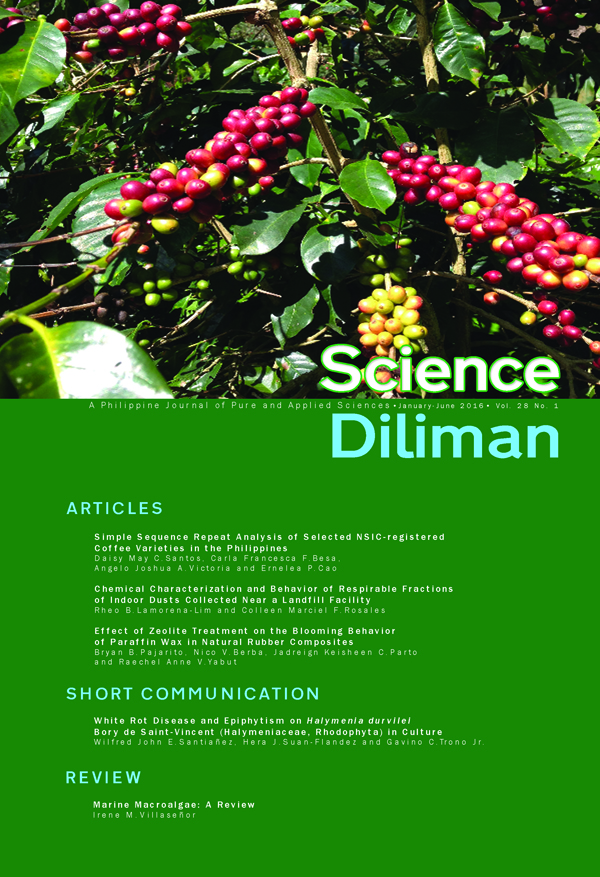Effect of Zeolite Treatment on the Blooming Behavior of Paraffin Wax in Natural Rubber Composites
Abstract
The blooming behavior of paraffin wax in natural rubber (NR) composites was studied as function of zeolite treatment. Three types of zeolite treatment were treated as factors: acid activation using hydrochloric acid (HCl) solution, ion exchange using tetradecyldimethyl amine (TDA) chloride salt, and organic modification using glycerol monostearate (GMS). The zeolite was treated according to a 23 full factorial design of experiment. Attenuated total reflectance – Fourier transform infrared (ATR-FTIR) spectroscopy was used to characterize the chemical structure of treated zeolite. Treated zeolite was applied as filler to NR composites deliberately compounded with high amount of paraff in wax. The amount of bloomed wax in surface of NR composite sheets was monitored with time at 50oC. Results show the bloom amount to be linear with the square root of time. NR composites reinforced with untreated, acid-activated, and ion-exchanged zeolite fillers indicate reduction in wax blooming as compared to unfilled NR. The bloom rate (slope) and initial bloom (y-intercept) were determined from the experimental plots. Analysis of variance (ANOVA) shows the bloom rate to be signif icantly increased when zeolite fillers are treated with GMS. Meanwhile, initial bloom was significantly enhanced when zeolite fillers are treated with TDA chloride salt and GMS. The significant increase in bloom rate and initial bloom can be attributed to the softening of the NR matrix at high amounts of TDA chloride salt and GMS.
Keywords: Natural rubber, composite, paraffin wax, blooming, zeolite



